Abstract
A simply prepared modified New York City medium, designated MNYC was compared with Thayer Martin (TM) medium for the cultural diagnosis of gonorrhoea. MNYC medium contained lincomycin, commercial gonococcal base and lysed whole blood, whereas the original New York City medium contained fresh horse plasma and haemoglobin solution, a basal medium prepared from basic ingredients and vanocmycin. Using MNYC medium gonococci were cultured from 96.1% of men and 100% of women with gonorrhoea (positive film and/or culture) compared with only 77.6% and 69% respectively using TM medium. There were no patients positive by culture on TM medium but negative by culture on MNYC medium. The proportion of men with positive films but negative culture was reduced from 17.1% on TM medium to 3.9% on MNYC medium. There were no women with positive films but negative cultures on MNYC medium compared with 19% on TM medium. MNYC medium is recommended as a simply prepared and highly efficient medium for the cultural diagnosis of gonorrhoea.
Full text
PDF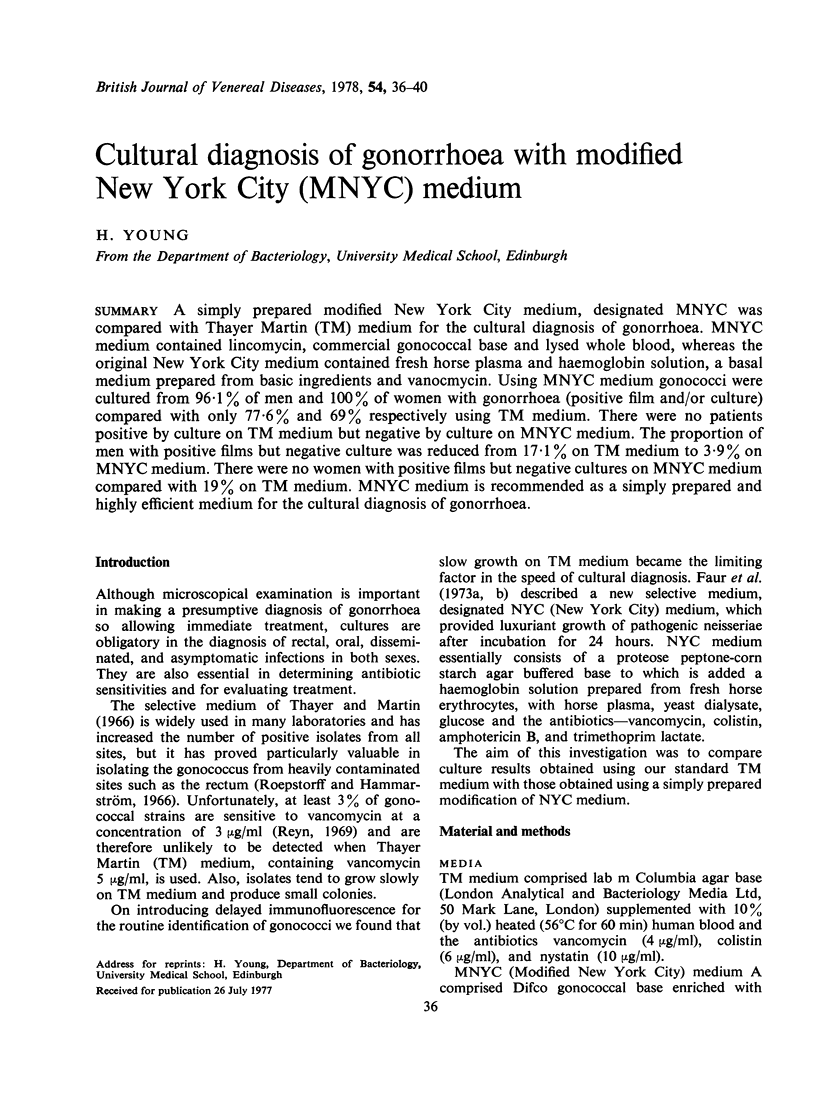
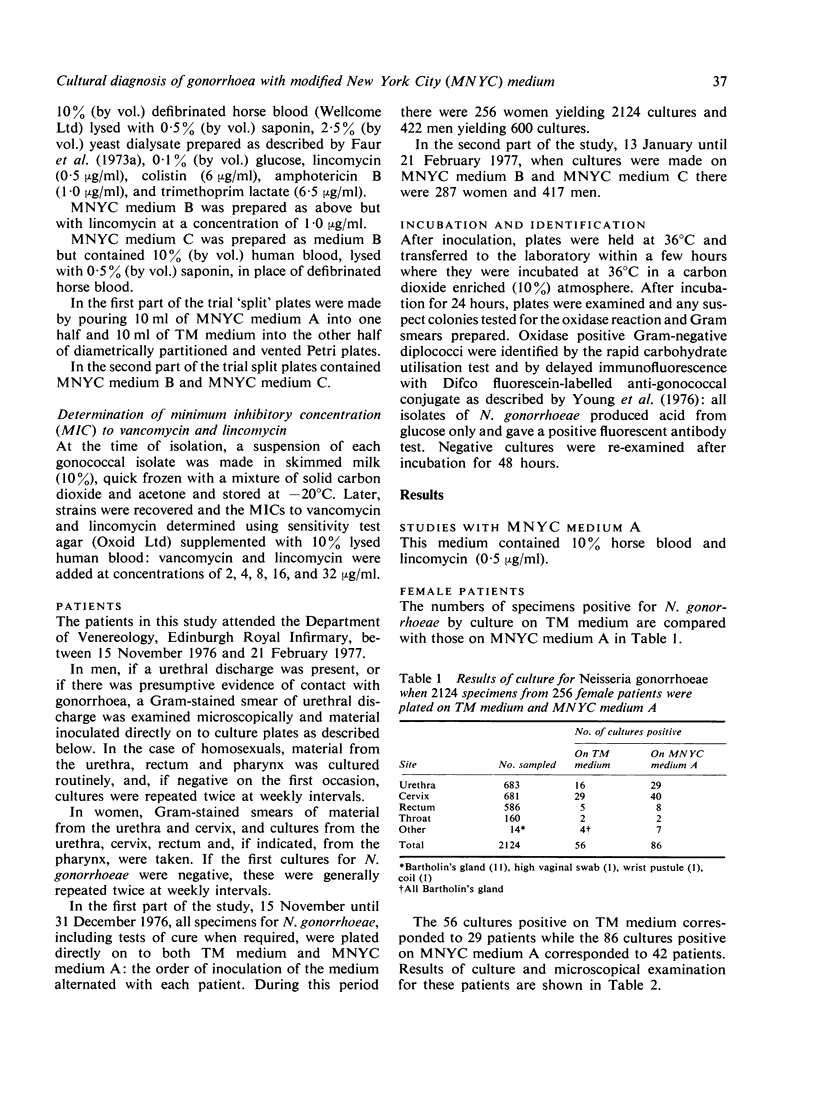
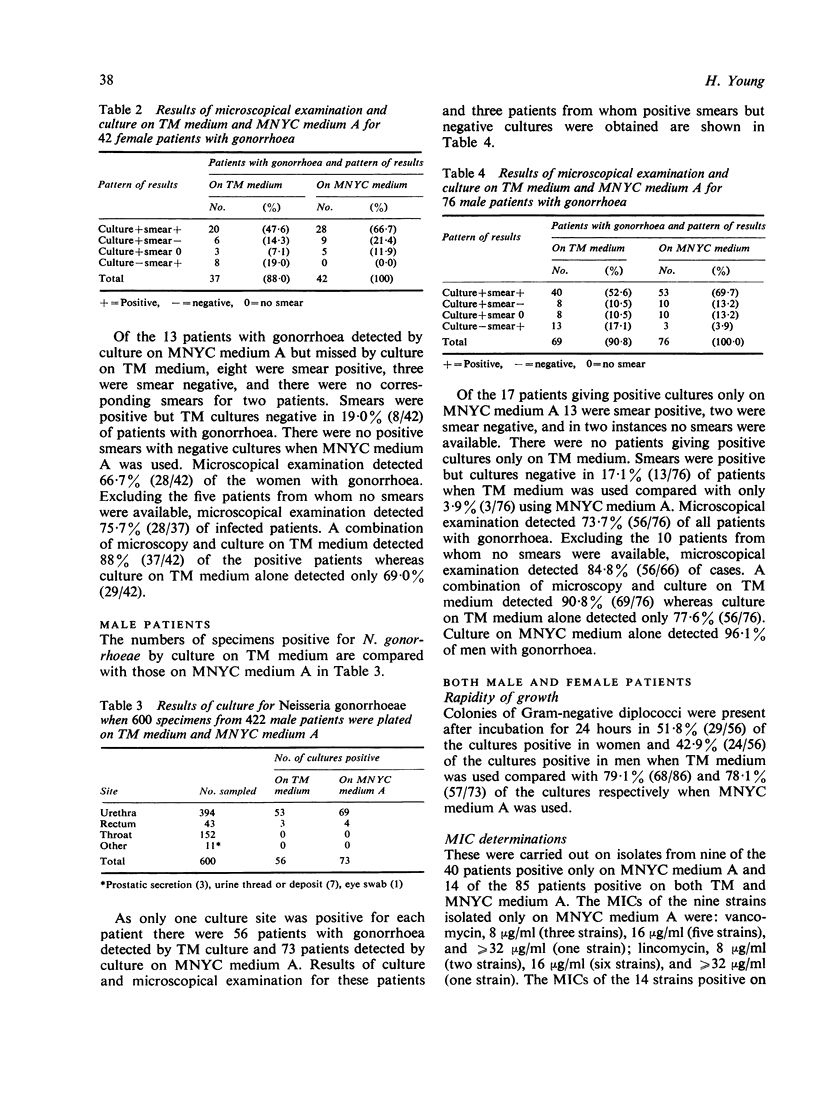
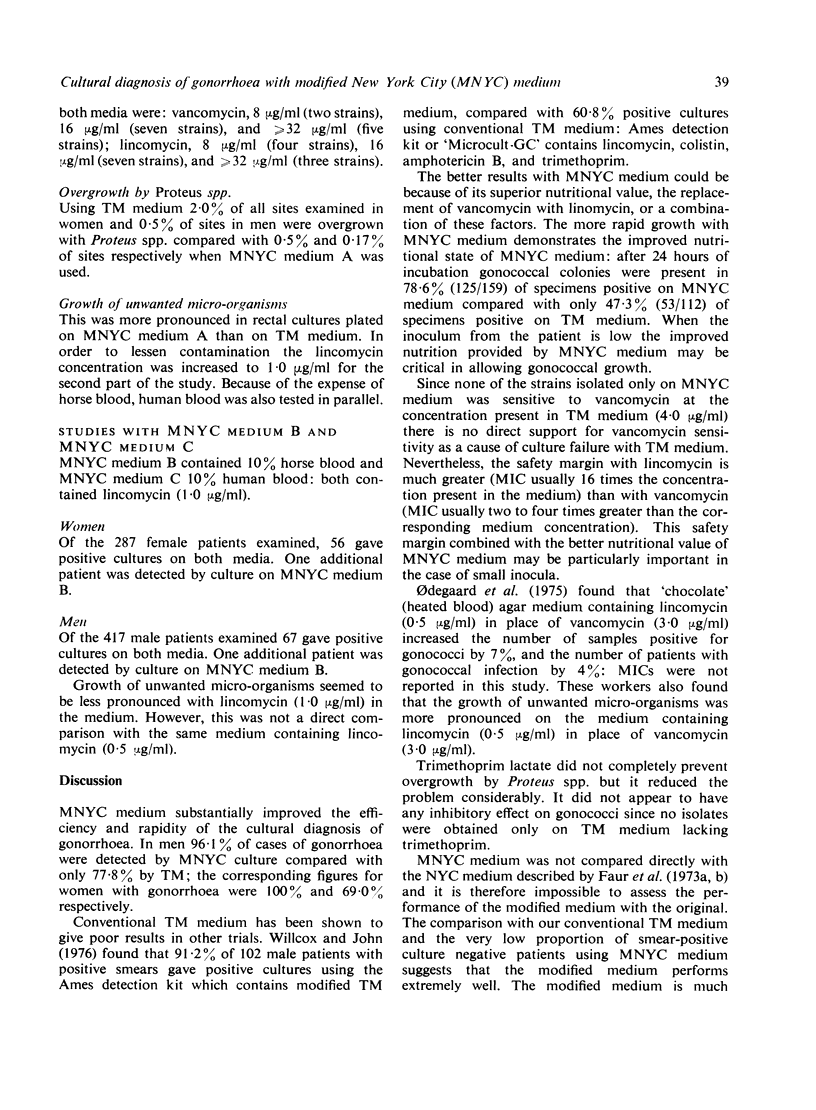
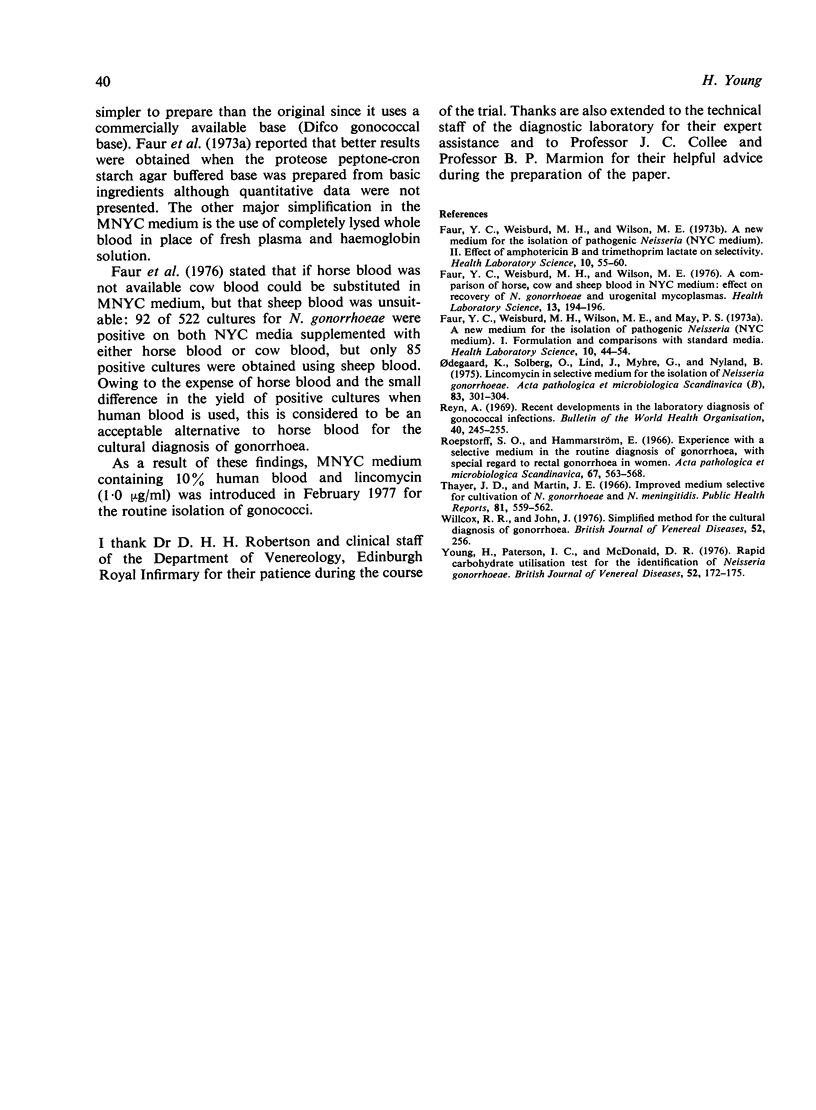
Selected References
These references are in PubMed. This may not be the complete list of references from this article.
- Faur Y. C., Weisburd M. H., Wilson M. E. A comparison of horse, cow, and sheep blood in NYC medium: effect on recovery of N. gonorrhoeae and urogenital mycoplasmas. Health Lab Sci. 1976 Jul;13(3):194–196. [PubMed] [Google Scholar]
- Faur Y. C., Weisburd M. H., Wilson M. E. A new medium for the isolation of pathogenic Neisseria (NYC medium). II. Effect of amphotericin B and trimethoprim lactate on selectivity. Health Lab Sci. 1973 Apr;10(2):55–60. [PubMed] [Google Scholar]
- Faur Y. C., Weisburd M. H., Wilson M. E., May P. S. A new medium for the isolation of pathogenic Neisseria (NYC medium). I. Formulation and comparisons with standard media. Health Lab Sci. 1973 Apr;10(2):44–54. [PubMed] [Google Scholar]
- Odegaard K., Solberg O., Lind J., Myhre G., Nyland B. Lincomycin in selective medium for the isolation of Neisseria gonorrhoeae. Acta Pathol Microbiol Scand B. 1975 Jun;83(3):301–304. doi: 10.1111/j.1699-0463.1975.tb00106.x. [DOI] [PubMed] [Google Scholar]
- Reyn A. Recent developments in the laboratory diagnosis of gonococcal infections. Bull World Health Organ. 1969;40(2):245–255. [PMC free article] [PubMed] [Google Scholar]
- Roepstorff S. O., Hammarström E. Experience with a selective medium in the routine diagnosis of gonorrhoae, with special regard to rectal gonorrhoae in women. Acta Pathol Microbiol Scand. 1966;67(4):563–568. doi: 10.1111/apm.1966.67.4.563. [DOI] [PubMed] [Google Scholar]
- Thayer J. D., Martin J. E., Jr Improved medium selective for cultivation of N. gonorrhoeae and N. meningitidis. Public Health Rep. 1966 Jun;81(6):559–562. [PMC free article] [PubMed] [Google Scholar]
- Willcox R. R., John J. Simplified method for the cultural diagnosis of gonorrhoea. Br J Vener Dis. 1976 Aug;52(4):256–256. doi: 10.1136/sti.52.4.256. [DOI] [PMC free article] [PubMed] [Google Scholar]
- Young H., Paterson I. C., McDonald D. R. Rapid carbohydrate utilization test for the identification of Neisseria gonorrhoeae. Br J Vener Dis. 1976 Jun;52(3):172–175. doi: 10.1136/sti.52.3.172. [DOI] [PMC free article] [PubMed] [Google Scholar]


